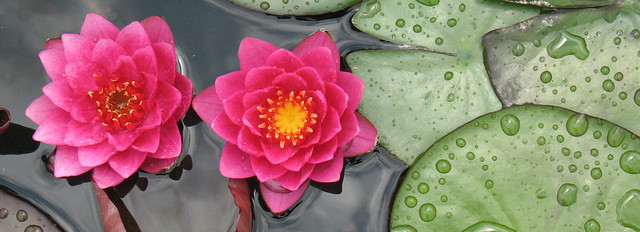On Virginia Tech's online Weed Identification Guide, when you search for cattails, you find this:
 |
| Screenshot from Virginia Tech Weed Identification guide by BotanicalAccuracy.com. |
 |
| A pair of cattail 'cigars' which contain the developing fruits. Photo by Amadej Trnkoczy on Flickr, Creative Commons. |
Instead of Typha, the listed genus name is Nympha, which not only is a non-existent genus name, but probably was meant to be Nymphaea, the waterlily genus. Sure, water lilies often grow very close to cattails in the edges of lakes or ditches, but they are completely different plants. Compare here:
 |
| A great pair of Nymphaea, water lilies. Photo by Vilseskogen on Flickr, Creative Commons. |
Nymphaea is of course named after the Greek nymphs, while Typha also comes from a greek word 'typhos', which is the ancient name for this plant. Apparently cattails have long been associated with mythological creatures such as serpents and dragons.
The same information and mistake is showing up in University of Missouri's Weed ID iphone app, and they must have some kind of collaboration with the originators of Virginia Tech's Weed data.
My main issue here is that universities that put out online (or printed) botanical tools for the general public need to get at least the basic science correct. People use these tools, which is great, but they will (and should) assume that the information is accurate, especially if if it is provided by a research and teaching university.
(Thanks to RO for sending me the link to the botanically inaccurate page.)
